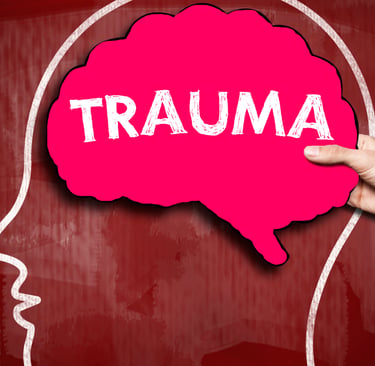Intergenerational Transmission of Trauma and Addiction in Families Affected by Pornography Addiction
Explore the impact of pornography addiction on families and the intergenerational transmission of trauma and addiction behaviors. Gain insights into the dynamics of trauma, addiction, and the effec...


The Transmission of Trauma and Addiction Behaviors Across Generations in Families Affected by Pornography Addiction
Pornography addiction is a complex issue that not only affects individuals but can also have a profound impact on their families. In recent years, there has been growing recognition of the intergenerational transmission of trauma and addiction behaviors within families affected by pornography addiction. This phenomenon highlights the significant role of family dynamics, attachment patterns, and intergenerational resilience in shaping the experiences of individuals and their families.
Understanding Intergenerational Trauma
Intergenerational trauma refers to the transmission of traumatic experiences from one generation to the next. It occurs when the unresolved trauma of a parent or caregiver is passed down to their children, impacting their psychological, emotional, and behavioral well-being. Pornography addiction, like other forms of addiction, can be seen as a coping mechanism for dealing with underlying trauma.
When a parent or caregiver is struggling with pornography addiction, it can create a dysfunctional family environment characterized by secrecy, shame, and emotional distance. Children growing up in such an environment may experience various forms of trauma, including neglect, emotional abuse, and exposure to explicit sexual content at a young age. These traumatic experiences can significantly impact their development and increase their vulnerability to addiction later in life.
The Role of Family Dynamics
Family dynamics play a crucial role in the transmission of trauma and addiction behaviors within families affected by pornography addiction. Dysfunctional communication patterns, lack of emotional support, and the absence of healthy boundaries can contribute to the perpetuation of addictive behaviors across generations.
Children growing up in families affected by pornography addiction may internalize unhealthy relationship patterns and distorted views of sexuality. They may struggle with issues such as low self-esteem, difficulties in forming intimate relationships, and an increased risk of developing their own addiction problems.
Furthermore, the secrecy and shame associated with pornography addiction can create a cycle of silence within the family. This silence prevents open and honest discussions about the impact of addiction, making it challenging for family members to seek help and break free from the cycle of addiction and trauma.
Attachment Patterns and Intergenerational Resilience
Attachment patterns, which are formed in early childhood, also play a significant role in the intergenerational transmission of trauma and addiction behaviors. Secure attachment, characterized by trust, emotional attunement, and healthy boundaries, provides a protective factor against the negative effects of trauma and addiction.
In contrast, insecure attachment, such as anxious or avoidant attachment styles, can increase the risk of trauma and addiction transmission. Children who grow up with insecure attachment patterns may struggle with emotional regulation, have difficulty forming healthy relationships, and be more susceptible to addictive behaviors as a way to cope with their unresolved trauma.
However, it is important to note that intergenerational resilience can also exist within families affected by pornography addiction. Resilience refers to the ability to adapt and recover from adversity. Some individuals may develop resilience through supportive relationships, therapy, and personal growth, breaking the cycle of addiction and trauma within their families.
Breaking the Cycle: Seeking Help and Healing
Recognizing the intergenerational transmission of trauma and addiction behaviors within families affected by pornography addiction is the first step towards breaking the cycle. It is essential for individuals and families to seek professional help and engage in therapy to address the underlying trauma and addictive patterns.
Therapy can provide a safe space for individuals to explore their experiences, emotions, and beliefs surrounding pornography addiction. It can also help individuals develop healthy coping strategies, improve communication within the family, and promote healing from the trauma that has been passed down through generations.
Additionally, support groups and community resources can play a vital role in the recovery process. Connecting with others who have had similar experiences can provide a sense of validation, support, and encouragement. It can also help individuals and families develop a network of support to navigate the challenges of recovery and promote intergenerational resilience.
Conclusion
The intergenerational transmission of trauma and addiction behaviors within families affected by pornography addiction is a complex issue that requires a comprehensive understanding of family dynamics, attachment patterns, and intergenerational resilience. By acknowledging the impact of addiction on individuals and their families, seeking professional help, and fostering a supportive environment, it is possible to break the cycle and promote healing and resilience within these families.


